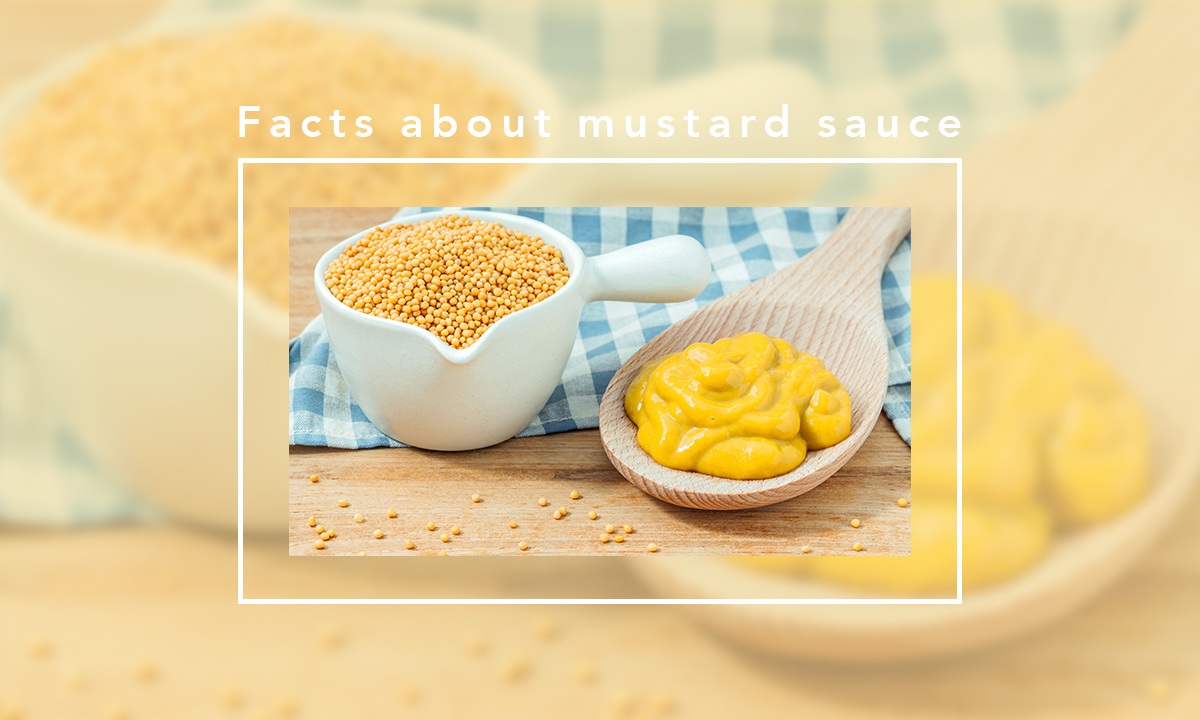Mustard
is any of several herbs belonging to the mustard family of plants, Brassicaceae (Cruciferae), or the condiment made from these plants’ pungent seeds.The principal types of mustard plants are white, or yellow, mustard (Sinapis alba), a plant of Mediterranean origin; brown, or Indian, mustard (Brassica juncea), which is of Himalayan origin; and black mustard (Brassica nigra) native to tropical regions of North Africa, temperate regions of Europe, and parts of Asia.

“MUSTARD YELLOW” IS A LIE!
The particular shade of yellow to which mustard lends its name owes its hue not to mustard seeds themselves, but to the vibrantly colored turmeric added for an extra kick of spice and brightness. Crushed mustard seeds alone vary from a pale yellow to a dark brown depending on their variety, but “turmeric yellow” doesn’t sound quite as good
KING LOUIS XI DIDN’T TRAVEL WITHOUT MUSTARD.
The French monarch considered the condiment so essential to his culinary experiences that he kept a pot with him at all times, so as not to be disappointed if he were to be served a meal in a household that wasn’t fully stocked.
Mustard salad
Mustard is a cruciferous vegetable, related to radish, cabbage and watercress. Its seeds are used as a spice, just like pepper, and it is also made into a condiment. Its leaves have a strong flavour and can be eaten raw or cooked, like spinach. Very green and rich in iron, it is an excellent source of vitamins A, C and K.
Creamy vinaigrette
Adding mustard helps to stabilize your basic vinaigrette, approx. 15 ml (1 tbsp.) of mustard for every 125 ml (½ cup) of vinaigrette.
Save calories
One tablespoon of mustard contains only 10 calories, compared to 40 for mayonnaise.
Treating sore throats Mustard
is used as a natural ingredient in relieving sore throats, by mixing it with a little fresh lemon juice, and a teaspoon of salt and honey, add the ingredients to half a cup of hot water, and set aside for ten minutes, and then It is used by gargling, and it continues to repeat the process until an improvement in the throat is felt, with the ball repeated more than once per day
Treating chest congestion mustard
helps eliminate the accumulations of phlegm in the throat, by rubbing a quantity of mustard over the chest, and placing a cloth soaked in hot water over it, so that an improvement is felt within a few minutes, and the same can be done on the back, pockets The nose and head
Muscle relaxation
Some people may complain of muscle tension, as a result of stressful exercise, so it is advised to take a hot water bath from mustard and Epsom salt, so that it works to relieve muscle pain at a faster rate than bathing with water and Epsom salt on its own.
Promotes Heart Health
It is rich in potassium, with 83 milligrams of the nutrient in 100 grams of the sauce. This nutrient helps your heartbeat stay regular. Mustard is also rich in phosphorus, 57 milligrams in 100 grams to be precise, which is believed to protect against heart disorders.
Relieves Respiratory Disorders
According to Ayurveda, mustard relieves congestion in the head and lungs. It is hence also promoted as a means to relieve respiratory disorders.
Fights Cancer
Mustard contains a lot of phytochemicals called glucosinolates and isothiocyanates. The results showed promising benefits of the condiment in cancer treatment. However, this one benefit remains to be proved.To view the sauce filling machine from Cubii company for filling and sealing of plastic cups, click on the following link





